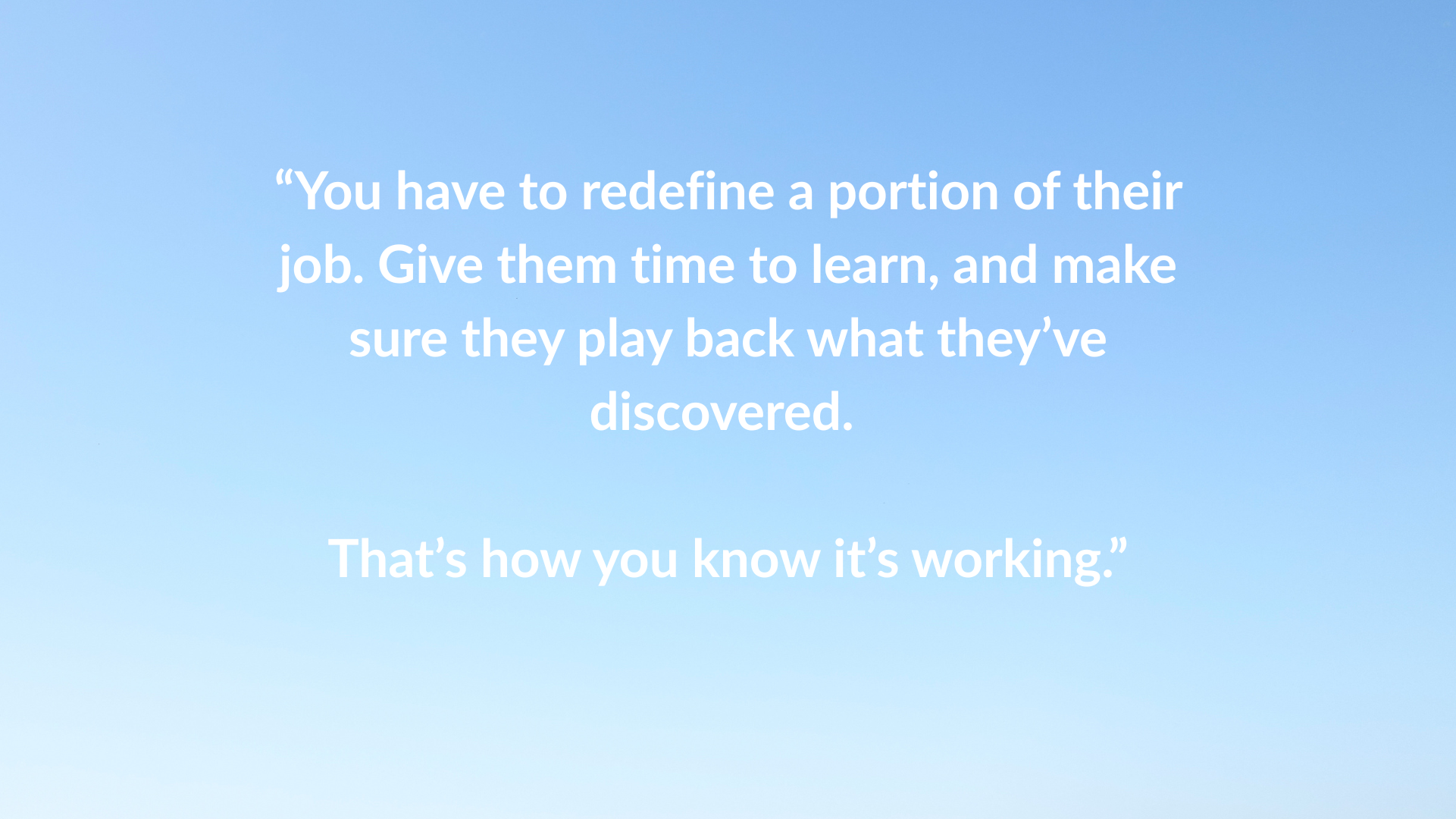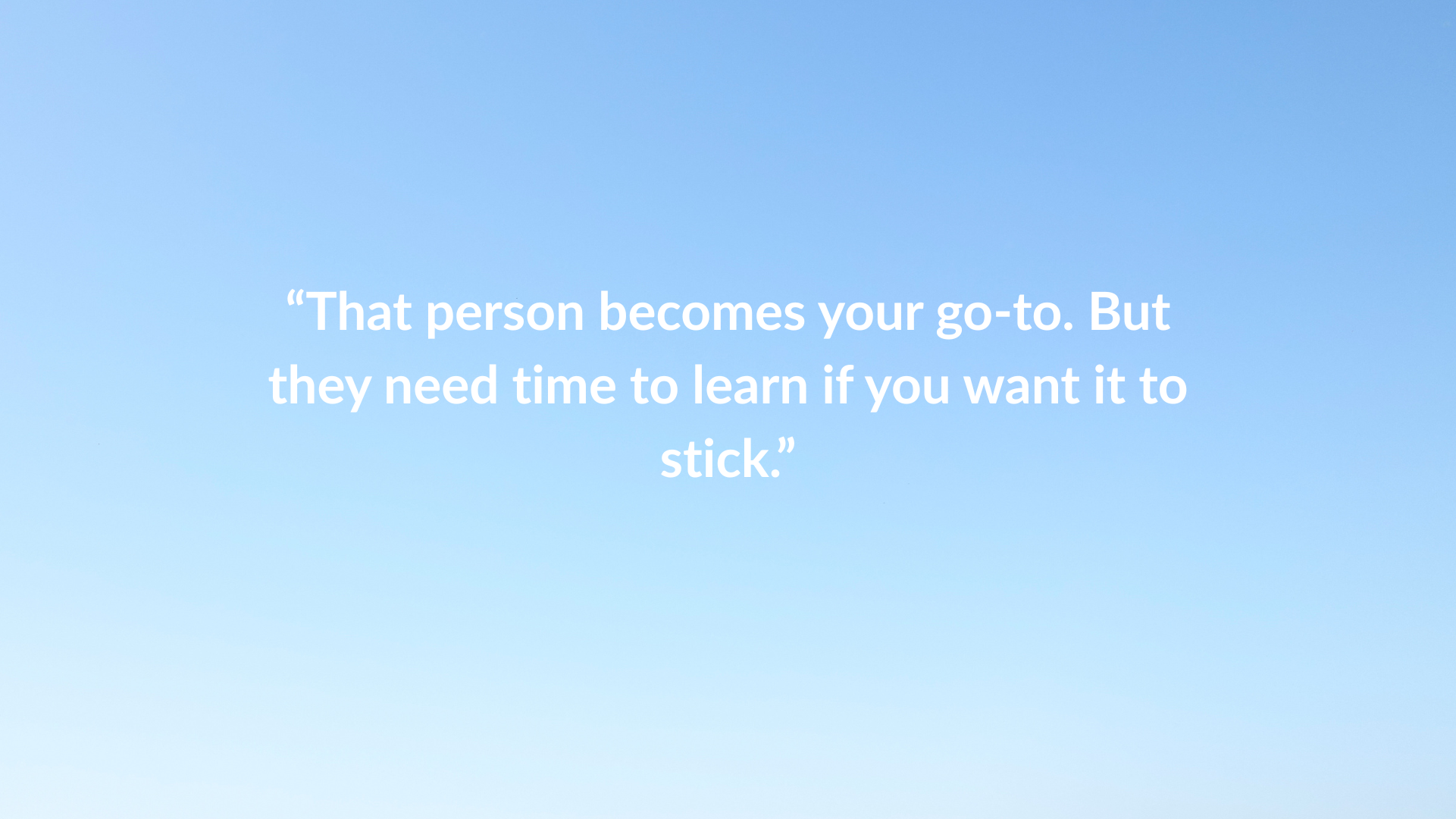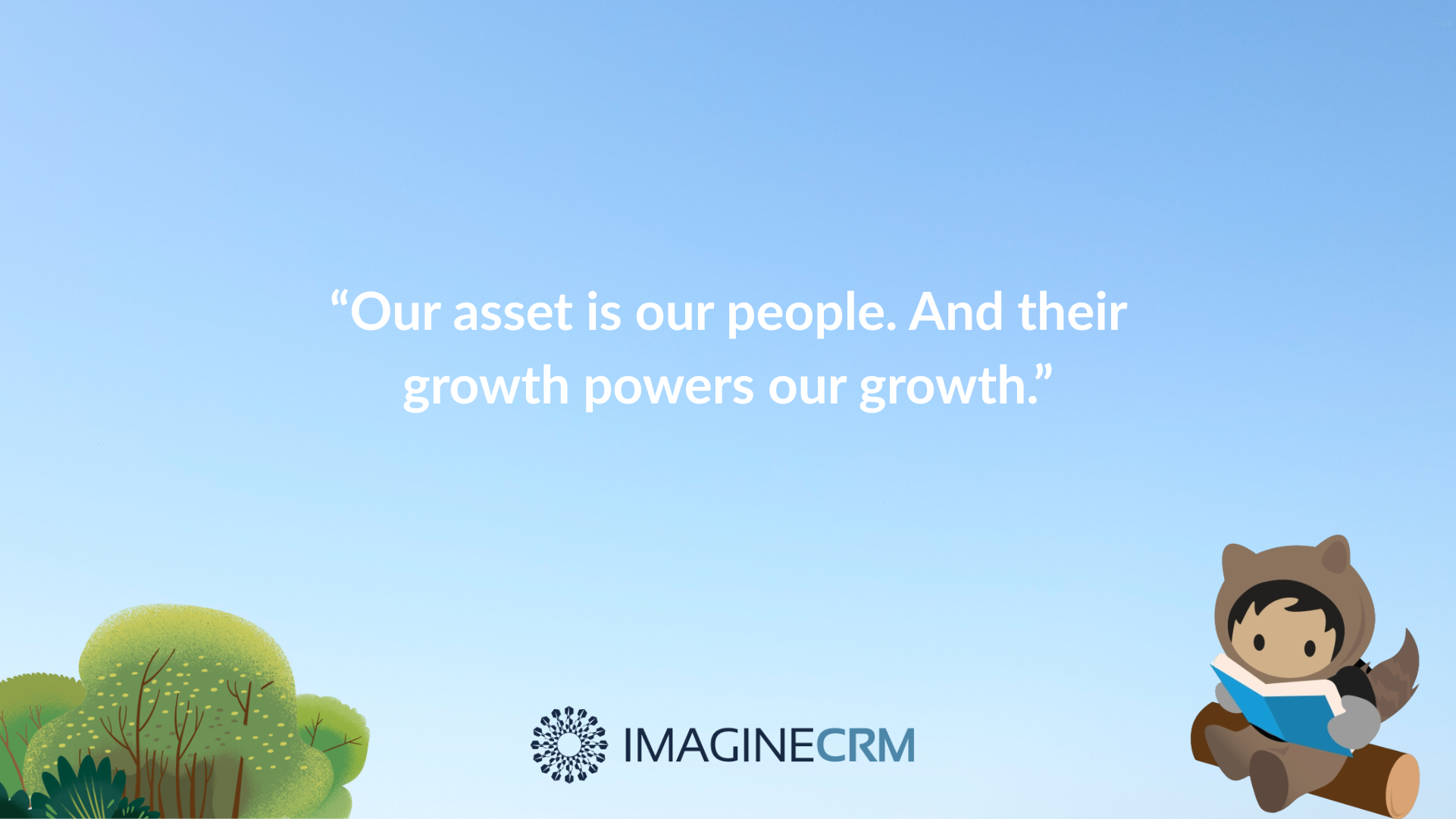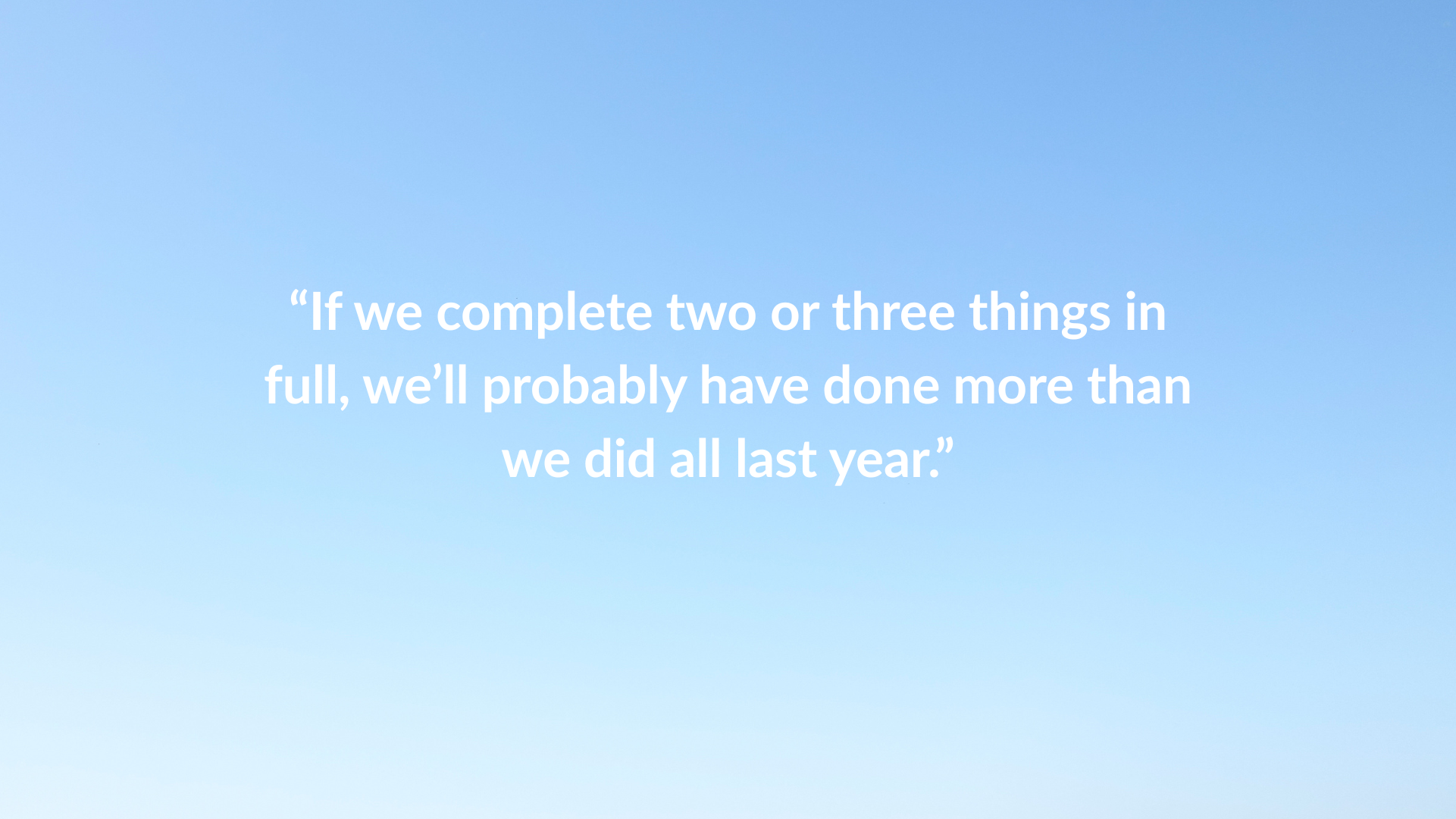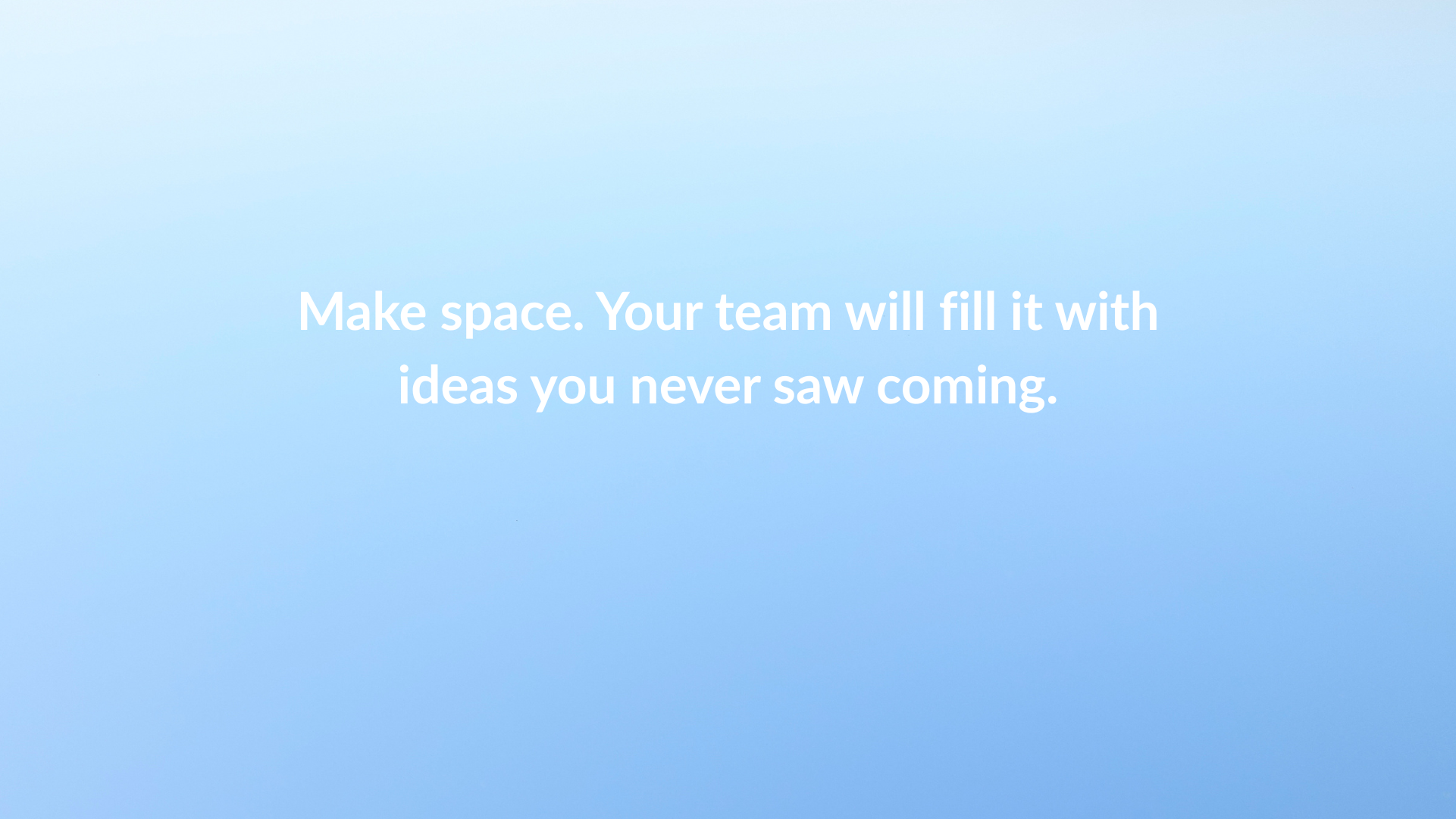Redefine what innovation looks like
Not every breakthrough comes from a new product launch or major digital transformation. Sometimes, innovation is simply spotting an outdated workflow and fixing it. Sometimes, it’s finding a way to use AI to shave five minutes off a daily process that impacts the whole team. Sometimes, it’s changing how we communicate so things don’t fall through the cracks. And, sometimes it’s innovating to bring an entire new Salesforce platform to life!
These “innovations” are just as valuable as the big ones. But they require leaders to listen, celebrate incremental progress, and encourage curiosity in all corners of the organization. When people know that small improvements are welcome, they’re far more likely to step up and suggest them.
I always tell teams that innovation thrives when you clarify that all ideas are welcome, not just the shiny ones.
Make time to play and learn.
One of the most overlooked ingredients in innovation is unstructured time to experiment. I’ve seen incredible breakthroughs happen not during formal meetings, but when someone had the freedom to “play around” with a new tool, test something out, team shared time to collaborate on AI tools, or look under the system's hood without pressure.
I always share with those who I work with that we need to stop treating learning as optional or something people do in their spare time, this is crucial for people thinking about how Salesforce can help their teams, too.
If we want our teams to use tools like Salesforce well, or apply AI in a way that saves time, we need to give them the space to try, fail, learn, and try again.
This means carving out learning time, encouraging exploration, and building that into someone’s week as a normal part of their role, not as a side project.

